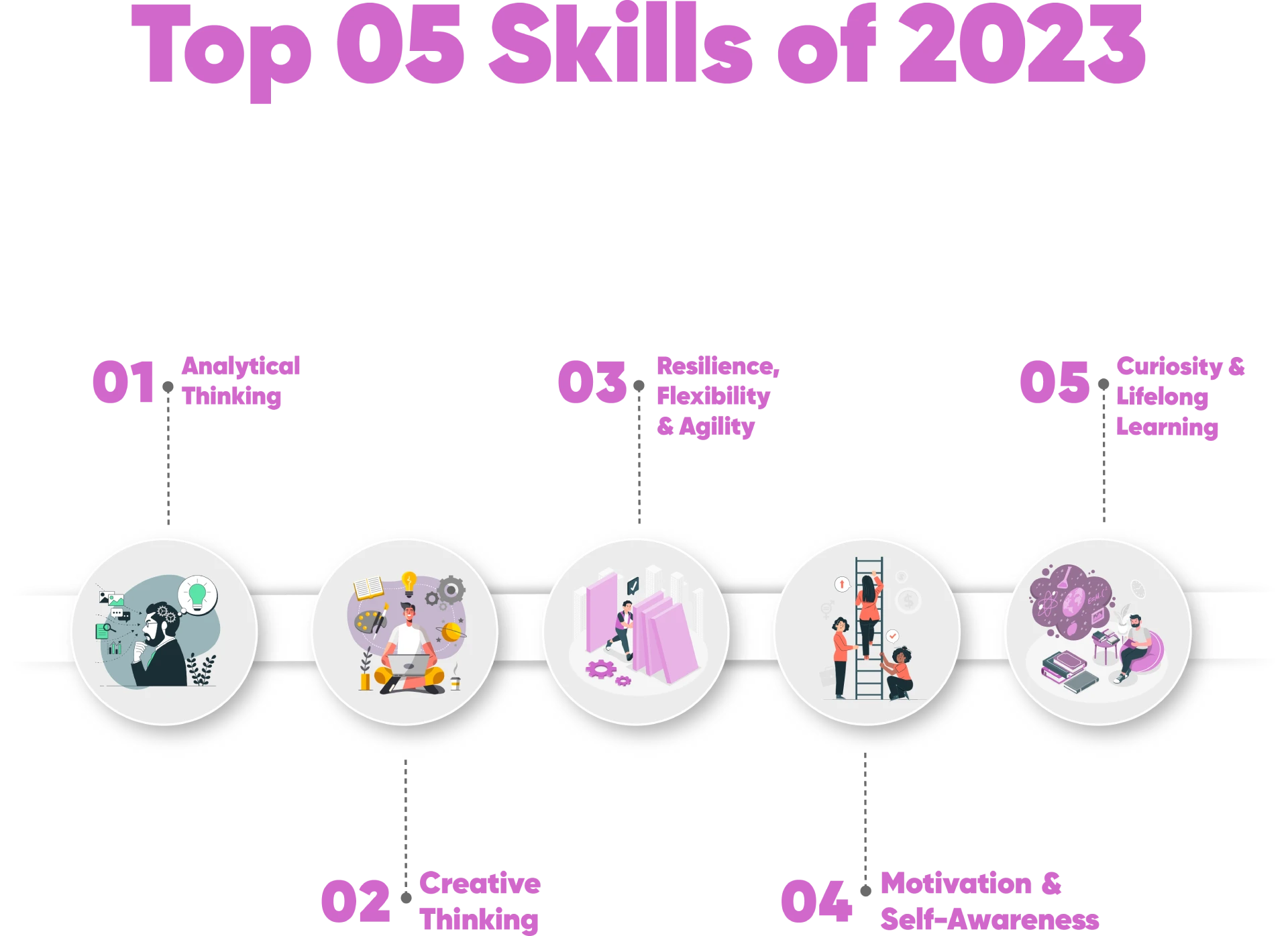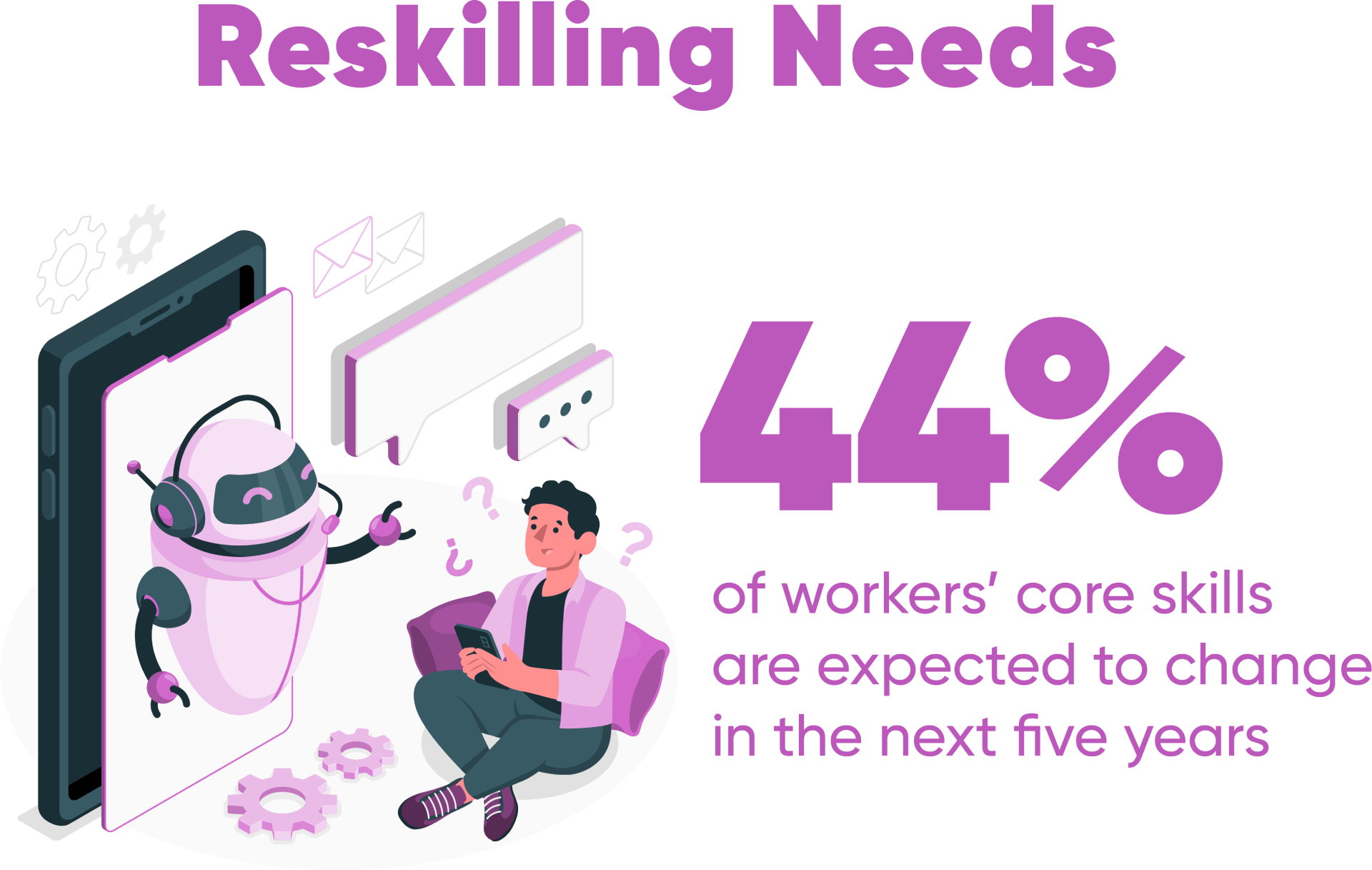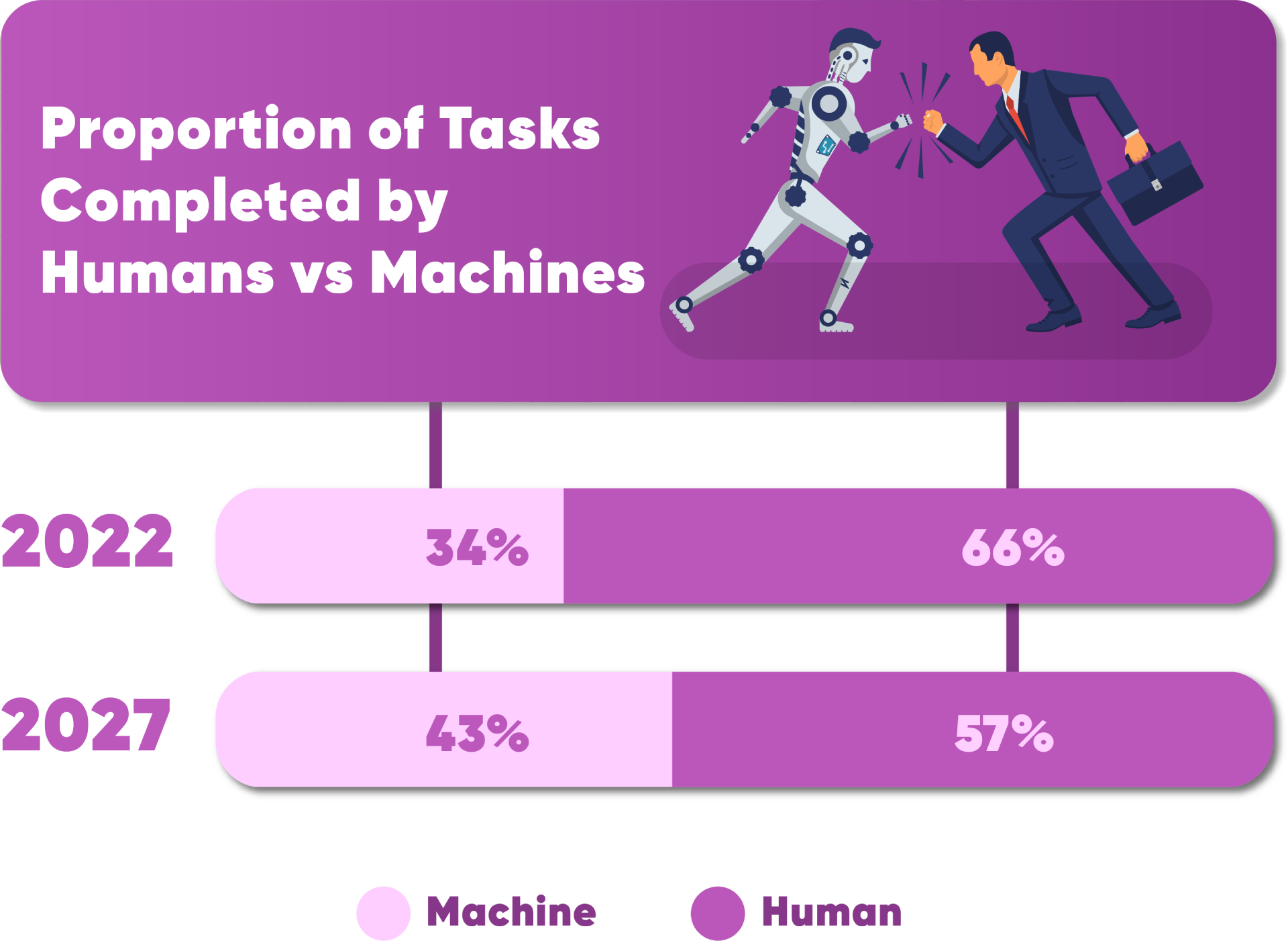Skills for the Future: Adapting to Shifting Job Market Demands
02-June-2023
The job market is constantly changing, and the most significant drivers of change are environmental, technological and economic trends. Businesses predict that the strongest net job-creation effect will be driven by investments that facilitate the green transition of businesses, the broader application of ESG standards and supply chains becoming more localized. Climate change adaptation and the demographic dividend in developing and emerging economies are also expected to create jobs.
Technological advancement is also expected to drive job growth, but it will also lead to job displacement in some sectors. The net job creation effect of technological advancement is expected to be positive, but it will be smaller than the net job creation effect of environmental and economic trends.
The three key drivers of expected net job destruction are slower economic growth, supply shortages and the rising cost of inputs, and the rising cost of living for consumers. Employers also recognize that increased geopolitical divisions and the ongoing impact of the COVID-19 pandemic will drive labor market disruption.


The areas experiencing the fastest growth in employment are closely tied to technology, digitalization, and sustainability. Technology-related roles dominate this category, with AI and Machine Learning Specialists leading the way, followed by Sustainability Specialists, Business Intelligence Analysts, and Information Security Analysts. As economies transition towards renewable energy, there is also notable growth in roles such as Renewable Energy Engineers and Solar Energy Installation and System Engineers.
Conversely, the fastest-declining roles are predominantly those that can be replaced or automated through technology and digitalization. Clerical and secretarial positions face the greatest decline, with Bank Tellers and Related Clerks, Postal Service Clerks, Cashiers and Ticket Clerks, and Data Entry Clerks expected to be most affected.
Significant job growth is anticipated in the fields of education, agriculture, digital commerce and trade. The Education industry is projected to see a 10% increase, resulting in the creation of 3 million new jobs for Vocational Education Teachers and University and Higher Education Teachers. The agricultural sector will also experience growth, with around 30% more jobs expected for Agricultural Equipment Operators, amounting to an additional 3 million positions. Moreover, the rise of digitalization will lead to approximately 4 million new digitally-enabled roles in areas such as E-Commerce Specialists, Digital Transformation Specialists, and Digital Marketing and Strategy Specialists.

Employers are placing a greater emphasis on strong cognitive skills as they recognize the significance of solving complex problems in today’s work environment. Analytical thinking and creative thinking are considered the most crucial skills for workers in 2023, and this trend is expected to continue over the next five years. The importance of technological literacy, particularly in areas like AI and big data, is anticipated to increase, leading companies to prioritize skill development in these areas in their strategies for the upcoming years.

Companies are facing a number of challenges, including skills gaps and an inability to attract talent. This is due to the fact that the skills required for many jobs are changing rapidly, and workers are not always able to keep up. As a result, companies are increasingly looking for ways to train and reskill their employees.
A recent study found that six in ten workers will require training before 2027, but only half of employees currently have access to adequate training opportunities. This gap between the skills that workers have and the skills that they need is putting a strain on businesses.
There are a number of things that companies and governments can do to address this issue. Companies can invest in training and development programs for their employees. Governments can provide funding for skills training programs. They can also create policies that make it easier for workers to upskill and reskill.
By working together, companies and governments can help to ensure that workers have the skills they need to succeed in the future.

The pace of automation has slowed down in recent years. In 2020, businesses estimated that 47% of business tasks would be automated in the following five years. However, today, respondents have revised down their expectations to predict that 42% of business tasks will be automated by 2027. This is a negligible 1% increase from the level of automation in 2020.
While the pace of automation has slowed, the types of tasks that are being automated are changing. In the past, automation was focused on physical and manual tasks. However, in the future, automation is expected to focus on reasoning, communicating and coordinating tasks, which are all tasks that humans are currently better at than machines.
Artificial intelligence (AI) is a key driver of this shift. AI is expected to be adopted by nearly 75% of surveyed companies by 2027. AI is expected to lead to high churn in the job market, with 50% of organizations expecting it to create job growth and 25% expecting it to create job losses.
The impact of AI on the job market is still uncertain. However, it is clear that AI is changing the nature of work and that businesses need to start preparing for the future.







